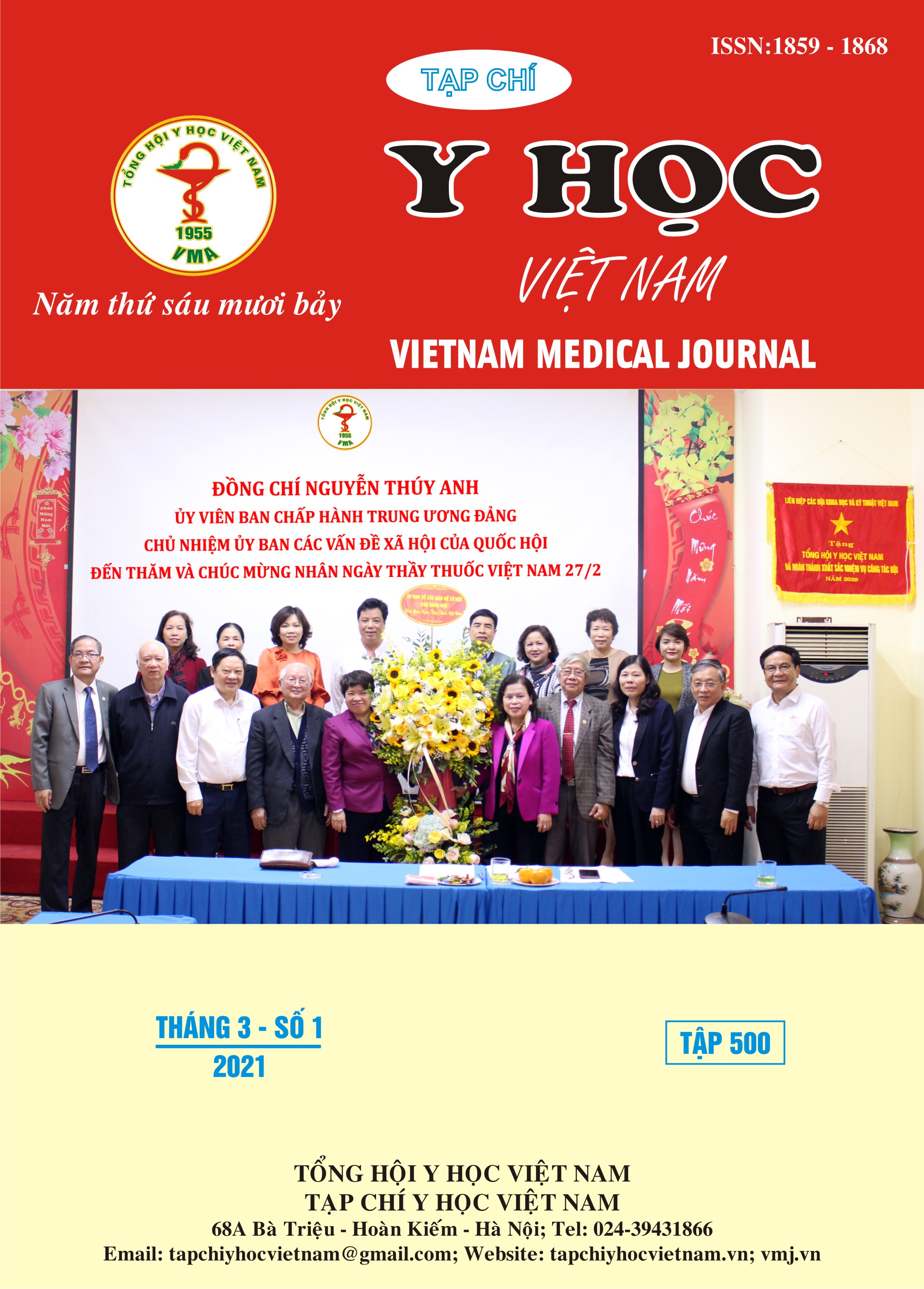RENAL SCARING AND RELATION TO BLADDER FUNCTION IN PATIENTS POST-OPERATIVE SPINAL BIFIDA
Main Article Content
Abstract
Purpose: to discrible damage kidney and relation to bladder function in patients post-operative spinal bifida. Materials and Methods: Retrospectively reviewed the records of 62 patients in postoperative spinal bifida patients from 01.2013 to 31.03.2019 at Nattional Hospital of Peadiatrics. All patients were done renal scintygraphy to show renal scars and cystometry with parameters include bladder compliance, bladder capacity compare to age < 65%, bladder pressure ≥ 30 cmH20, p < 0,05 statistical significantly. Results: 62 patients in post-operative spinal bifida include myelomeningocele 72,6% and limpomyelomeningocele 27,4%. Male was 43,5%, female was 53,6%. 18 patients showed renal scars with 29,0%, mean age in renal scars group were higher than non renal scars: 5,1 ± 3,1 years compare to 2,4 ± 2,2 years, p = 0,001. Cystometry results showed 41,9% patients with low bladder compliance, 12,9% cases with bladder capacity for age < 65% and 22,6% patients with bladder pressure ≥ 30 cmH2O. Patients with low compliance had 61,5% renal scars, patients with bladder capacity for age < 65% had 75,0% renal scars and patients with bladder pressure ≥ 30 cmH2O had 71,4% renal scars, statistical significantly. Conclusion: Renal scaring related to bladder function with low compliance, bladder capacity for age < 65% and bladder pressure ≥ 30 cmH2O, sitasitistic significantly patients in post-operative spinal bifida.
Article Details
Keywords
renal scar, spinal bifida, cystometry
References
2. Bauer S.B (2008). Neurogenic bladder: etiology and assessment. Pediatr Nephrol, 23(4), 541-51.
3. Dik P, Klijn A.J, Van Gool J.D et al (2006). Early start to therapy preserves kidney function in spina bifida patients. Eur Urol, 49(5), 908-13.
4. Ozel S.K, Dokumcu Z, Akyildiz C et al ( 2007). Factors affecting renal scar development in children with spina bifida. Urol Int, 79(2), 133-6.
5. Shiroyanagi Y, Suzuki M, Matsuno D et al ( 2009). The significance of 99mtechnetium dimercapto-succinic acid renal scan in children with spina bifida during long-term followup. J Urol, 181(5), 2262-6; discussion 2266.
6. Arora G, Narasimhan K.L, Saxena A.K et al (2006). Risk Factors for Renal Injury in Patients with Meningomyelocele. Indian Pediatrics, 44, 417-420.
7. Prakash R, Puri A, Anand R et al (2017). Predictors of upper tract damage in pediatric neurogenic bladder. J Pediatr Urol, 13(5), 503 e1-503 e7.
8. Bruschini H, Almeida F.G, Srougi M et al (2006). Upper and lower urinary tract evaluation of 104 patients with myelomeningocele without adequate urological management. World J Urol, 24(2), 224-8.


